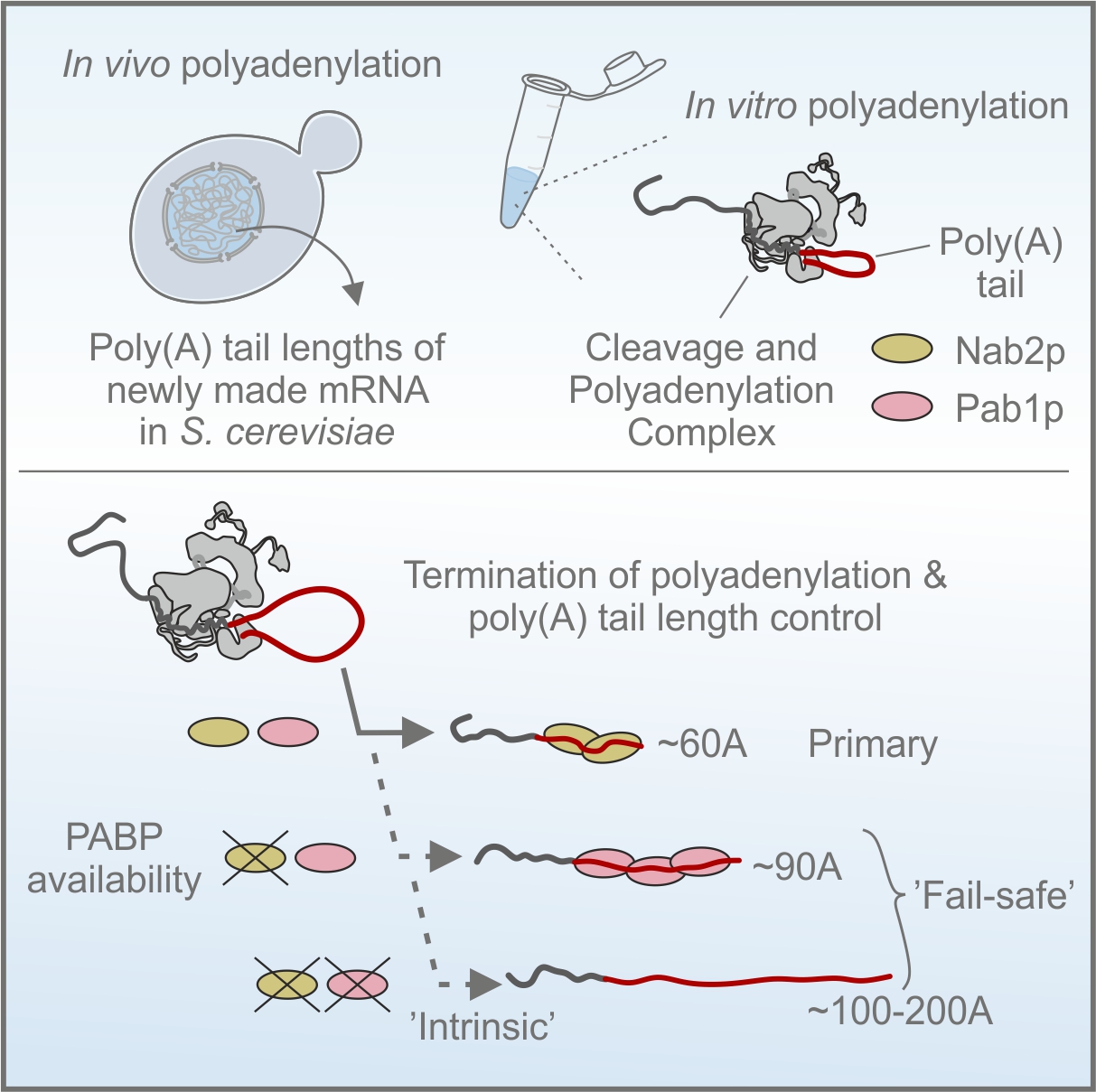Three-layered control of mRNA tails
In a joint collaboration, researchers from Aarhus, Cambridge and Warsaw have characterized how the essential mRNA poly(A) tails are synthesized in the budding yeast Saccharomyces cerevisiae. The study reveals several mechanisms controlling poly(A) tail lengths and hereby ensuring the robustness of gene expression.

As their name suggests, messenger RNAs (mRNAs) act as intermediary molecules in the transfer of genetic information from DNA to their translation into proteins. In eukaryotic organisms, including humans, plants and fungi, the ‘back end’ of the mRNA molecule almost invariably carries a tag of repeated units of adenosines, or As, one of the four alphabets in the genetic code. This unique structure, the poly(A) tail, is essential for the mRNA to get through the cell nucleus to the ribosomes located in the cytoplasm where protein synthesis occurs.
The poly(A) tail is a dynamic structure, which gets shorter over time as the mRNA molecule ages. Indeed, removal of the poly(A) tail by cytoplasmic enzymes is believed to work as a timer, or a fuse, triggering mRNA degradation once all the As have been removed. This in turn provides for cellular mRNA homeostasis ensuring that the right amount of template is available for the ribosomes.
For such a system to operate efficiently, poly(A) tails must have a precise length when they enter the cytoplasm and, consequently, when they are made in the nucleus. Indeed, this is the case, with species-specific poly(A) tail lengths varying from ~60 As in single-celled fungi to ~250 As in human cells. However, the instructions to make poly(A) tails are not encoded in the DNA sequence together with the rest of the mRNA; instead a dedicated molecular machinery, called the ‘Cleavage and Polyadenylation Factor (CPF)’, adds poly(A) tails to newly produced mRNAs with the help from accessory factors. But how then is precise poly(A) tail length achieved when it is not instructed by the DNA?
The researchers revealed a surprising finding
In the new study, published in the journal Genes & Development, researchers from Aarhus, Cambridge and Warsaw revealed the surprising finding that more than one pathway serves to control poly(A) tail lengths in Saccharomyces cerevisiae, a single-celled yeast widely known for its use in baking and brewing, but also an invaluable workhorse organism in molecular biology laboratories worldwide.
Initially, perturbations of individual pathways suspected to regulate poly(A) tail synthesis yielded little effects on tail length, implying the presence of redundant mechanisms. Indeed, careful manipulation of different accessory factors led to the realization that three separate mechanisms control poly(A) tail lengths. Two of these are executed by so-called ‘poly(A) binding proteins (PABPs)’, which associate with nuclear mRNA poly(A) tails and instruct the CPF machinery to terminate its tail synthesis. The third of the identified pathways was particularly unexpected as it does not require PABPs at all but instead takes advantage of an in-built property of the CPF machinery itself to cease A addition. In the absence of all three control systems poly(A) tails grow excessively long, severely compromising protein production.
The current study provides an example of how critical processes in nature often have – sometimes several – backup systems. In the case of poly(A) tail synthesis, such ‘fail-safe’ mechanisms have likely evolved to compensate for natural fluctuations in the availability of PABPs. Providing alternative biochemical pathways therefore ensures that the transfer of genetic information does not come to a halt if one factor temporarily becomes limiting.
The scientific article was published in the international journal Genes & Development:
Matti Turtola, M. Cemre Manav, Ananthanarayanan Kumar, Agnieszka Tudek, Seweryn Mroczek, Pawe? S. Krawczyk, Andrzej Dziembowski, Manfred Schmid, Lori A. Passmore, Ana Casañal and Torben Heick Jensen
“Three-layered control of mRNA poly(A) tail synthesis in Saccharomyces cerevisiae”
DOI: https://doi.org/10.1101/gad.348634.121
For further information, please contact
Postdoc Matti Turtola – mt@mbg.au.dk - +45 2475 1713
Professor Torben Heick Jensen – thj@mbg.au.dk - +45 6020 2705
Department of Molecular Biology and Genetics, Aarhus University, Denmark
